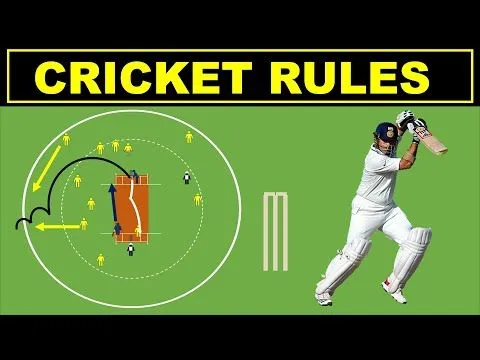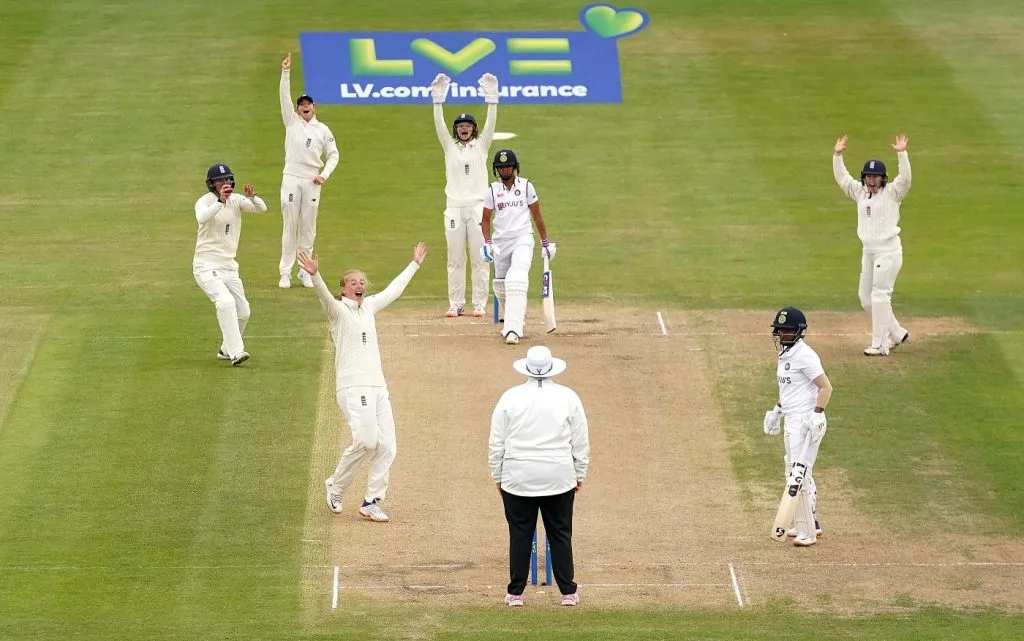Cricket has evolved a lot over the years. However, some rules need to catch up in this evolution, creating confusion and often controversy. The International Cricket Council (ICC), the sport’s governing body, has periodically updated the laws of the game, but there remain a few outdated cricket rules that could benefit from a modern makeover. Here are five such rules the ICC should consider revising to enhance the game’s appeal and fairness.

1. The Duckworth-Lewis-Stern Method
The Duckworth-Lewis-Stern (DLS) method, used to calculate target scores in rain-affected limited-overs matches, has been a subject of debate since its introduction. While mathematically sound, it often leads to results that feel unfair or difficult for fans to understand.
Why It Needs Revision
Complexity: The DLS method is complex, making it hard for casual fans to follow.
Fairness: In some scenarios, teams chasing a target under DLS face an uphill battle due to an uneven distribution of overs.
Suggested Revision
A simpler, more transparent method that can be easily explained and understood by fans, players, and commentators alike should be developed. This could involve more straightforward metrics that consider current game conditions and historical data more transparently.
2. The Over Rate Penalties
Over rate penalties have been a controversial issue in cricket, often leading to fines and suspensions for captains and teams. While maintaining a good over rate is important, the current penalties can be overly harsh and sometimes impact the outcome of matches unfairly.
Why It Needs Revision
Unfair Penalties: Penalizing teams for slow over rates can sometimes seem disproportionate, especially if the game has seen numerous stoppages.
Impact on Game: The threat of penalties can affect a captain’s tactical decisions, leading to a less competitive game.
Suggested Revision
Introduce a more flexible penalty system that accounts for game context, such as the number of interruptions or other delays outside the team’s control. Implementing real over rate tracking with warnings and minor in-game penalties might also help maintain pace without severely punishing teams.
3. The Follow-On Rule

The follow-on rule, which allows a team that leads by a significant margin in the first innings to enforce their opponents to bat again, is a longstanding cricket tradition. However, it often leads to predictable and less competitive matches.
Why It Needs Revision
Predictability: Enforcing the follow-on can sometimes lead to one-sided matches.
Strategy Limitation: It restricts the leading team’s strategic options, often leading to defensive rather than aggressive cricket.
Suggested Revision
Revising the follow-on rule to increase the required lead or offering the captains more strategic options can add more excitement and unpredictability to the game. For instance, the ICC could consider a floating follow-on lead that adjusts based on pitch conditions and match context.
4. The LBW Rule
The Leg Before Wicket (LBW) rule has seen many modifications, especially with the advent of technology like DRS (Decision Review System). Despite improvements, inconsistencies still exist, particularly around the “umpire’s call.”
Why It Needs Revision
Inconsistency: The “umpire’s call” aspect can lead to conflicting decisions.
Clarity: It can be confusing for fans and players, leading to debates and dissatisfaction.
Suggested Revision
Standardize the LBW rule to remove the “umpire’s call” ambiguity. If the ball tracking shows any part of the ball hitting the stumps, it should be given out. This would simplify the decision-making process and improve the transparency of umpiring decisions.
5. The Boundary Rule For Super Overs
The boundary count rule, which decided the winner of the 2019 World Cup final, caused significant controversy. It stipulates that in the event of a tie in a Super Over, the team with more boundaries in the match wins.
Why It Needs Revision
Unfair Result: This rule can result in a team losing despite performing equally well in all other aspects of the game.
Player and Fan Frustration: Such outcomes can be seen as arbitrary and unsatisfactory for players and fans alike.
Suggested Revision
In the event of a tie in a Super Over, consider alternative tie-breaking methods, such as another Super Over or a bowl-out, to determine a clear and fair winner.
Conclusion
Cricket’s charm lies in its traditions, but to keep the game fair and engaging, certain outdated rules need to be revisited. The ICC should consider these revisions to enhance the sport’s competitiveness, clarity, and appeal to a global audience. By addressing these outdated cricket rules, cricket can continue to grow and attract fans around the world.
